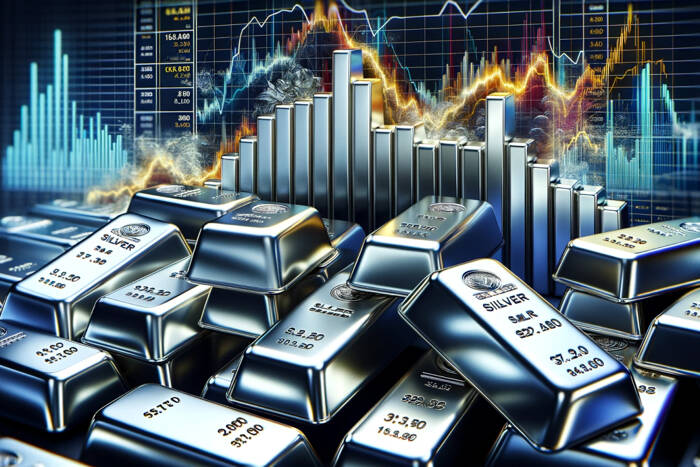Silver, often regarded as a safe-haven asset, has been experiencing significant fluctuations in its market value. Recent analyses suggest that a critical threshold has been reached, with a potential break below $38.51 that could significantly impact its trajectory. This article delves into the factors influencing silver prices, the implications of moving averages, and what investors should watch for in the coming weeks.
Understanding Silver’s Current Market Position
Silver (XAG) has long been a favored investment for those seeking to hedge against inflation and economic uncertainty. As of now, the metal is facing pressure from various market dynamics, including changes in interest rates, inflation data, and geopolitical tensions. The price of silver is not only influenced by its intrinsic value but also by investor sentiment and market speculation.
The Significance of the $38.51 Level
The $38.51 mark has emerged as a crucial support level for silver. A break below this threshold could signal a bearish trend, prompting traders to reassess their positions. This level is significant as it represents a psychological barrier for many investors. If silver fails to hold above this price, it may lead to increased selling pressure, pushing prices further down.
The Role of the 50-Day Moving Average
One of the key technical indicators to watch in the silver market is the 50-day moving average (MA). This average serves as a benchmark for the short-term price trend. If silver breaks below $38.51, it could bring the 50-day MA into play, which currently hovers around $37.00. A decline to this level could trigger additional selling, as traders often use moving averages to make buy or sell decisions.
Factors Influencing Silver Prices
Several factors are currently influencing silver prices:
Interest Rates: Rising interest rates typically strengthen the U.S. dollar, making silver more expensive for foreign investors. This can lead to decreased demand and lower prices.
Inflation: As inflation rates rise, many investors flock to precious metals like silver as a hedge. However, if inflation stabilizes or decreases, the demand for silver may wane.
Geopolitical Tensions: Global uncertainties, such as conflicts or trade disputes, can drive investors toward safe-haven assets. Any resolution of these tensions could lead to a decline in silver prices.
Industrial Demand: Silver is not only a precious metal but also an industrial commodity. Its use in electronics, solar panels, and medical applications can affect its demand and price.
What Investors Should Watch For
As the market evolves, investors should keep a close eye on several indicators:
Market Sentiment: Monitoring investor sentiment can provide insights into potential price movements. Bullish sentiment may support prices, while bearish sentiment could lead to declines.
Economic Data Releases: Key economic indicators, such as employment data and inflation reports, can significantly impact silver prices. Investors should stay informed about upcoming releases.
Technical Indicators: Besides the 50-day MA, other technical indicators like the Relative Strength Index (RSI) and Fibonacci retracement levels can offer additional insights into potential price movements.
Conclusion
The silver market is at a pivotal point, with the $38.51 level serving as a crucial support threshold. A break below this level could lead to increased volatility and a test of the 50-day moving average. Investors should remain vigilant, keeping an eye on economic indicators and market sentiment to navigate the complexities of silver trading. As always, thorough research and strategic planning are essential for making informed investment decisions in this dynamic market.




